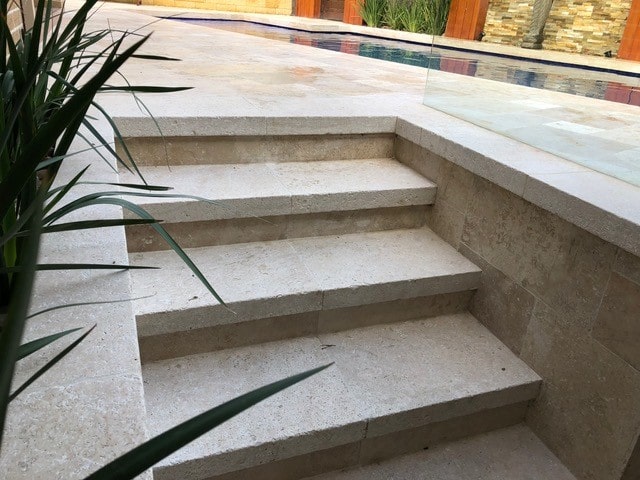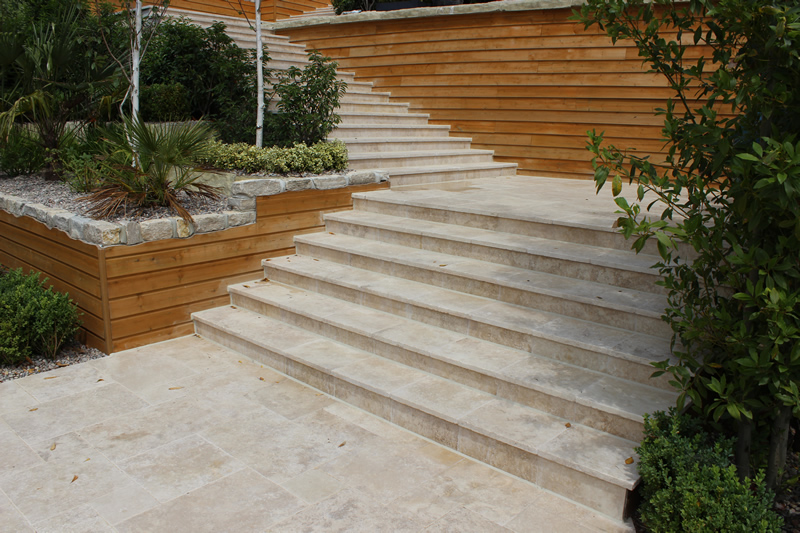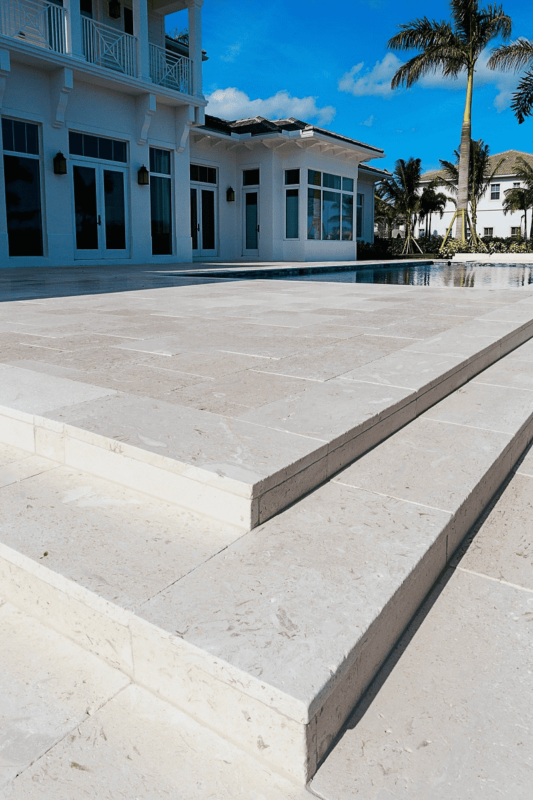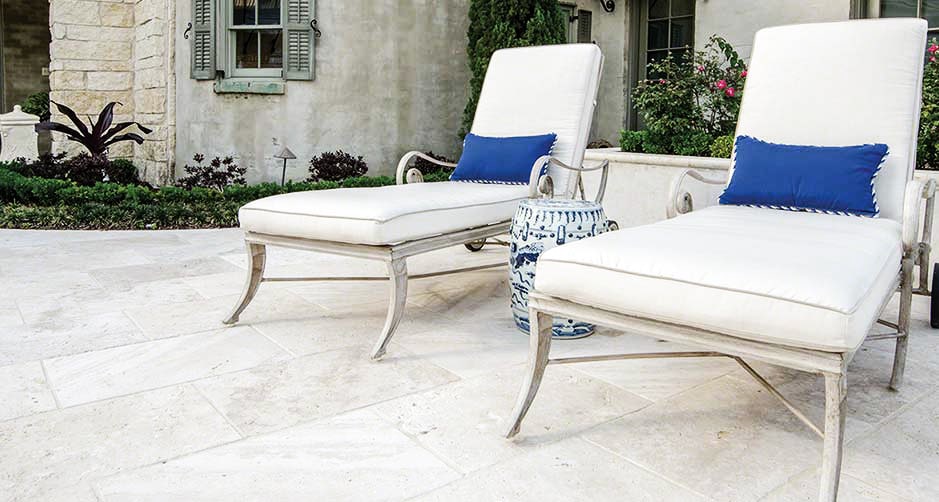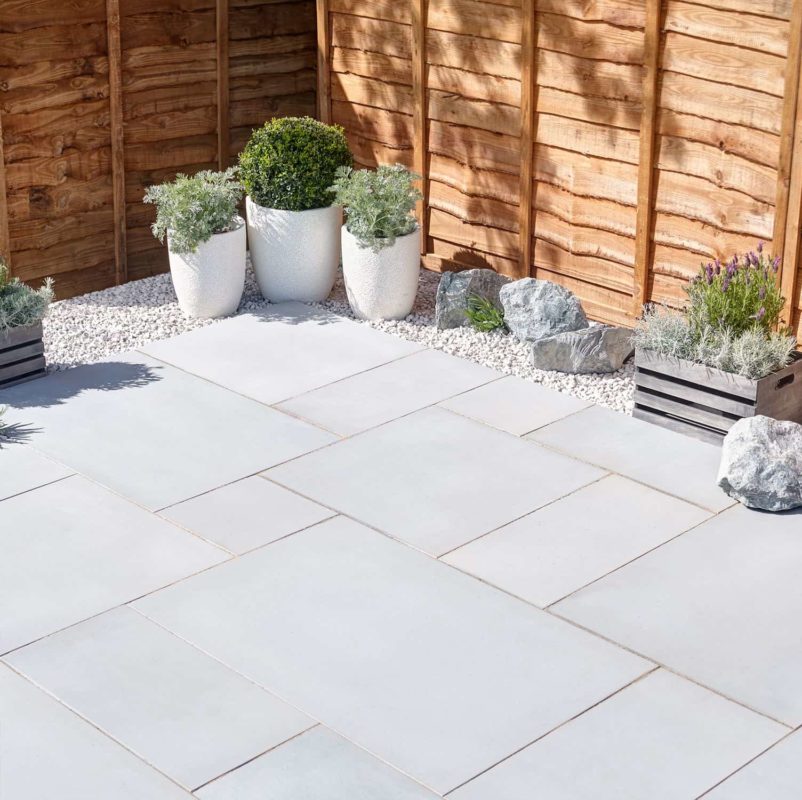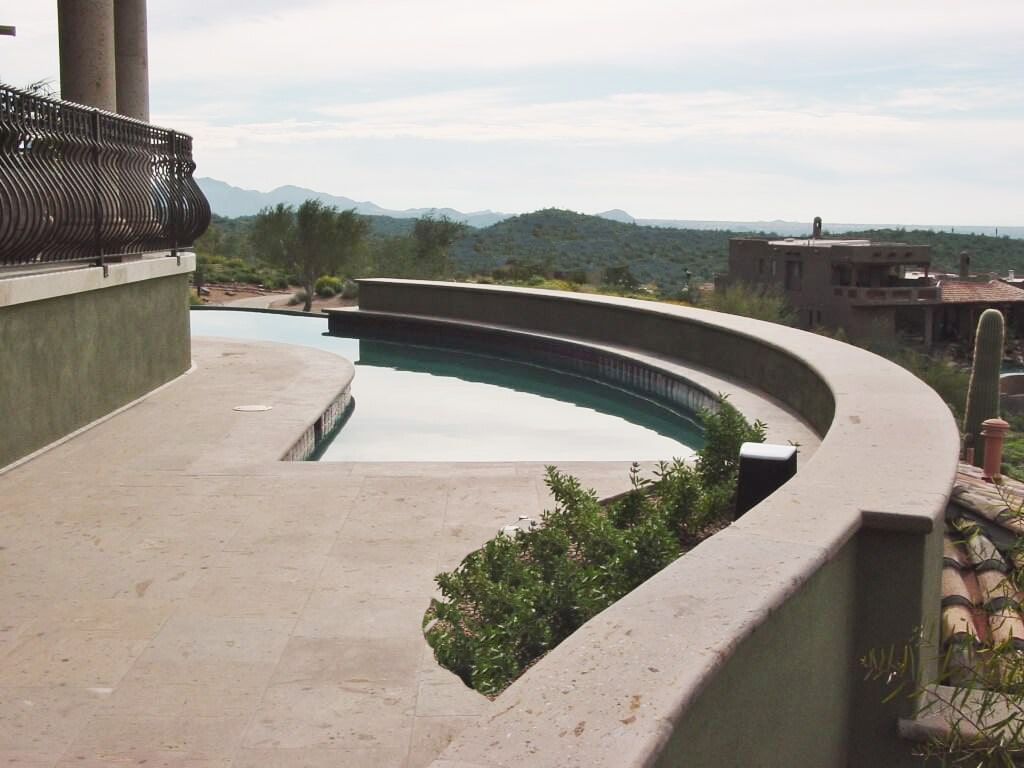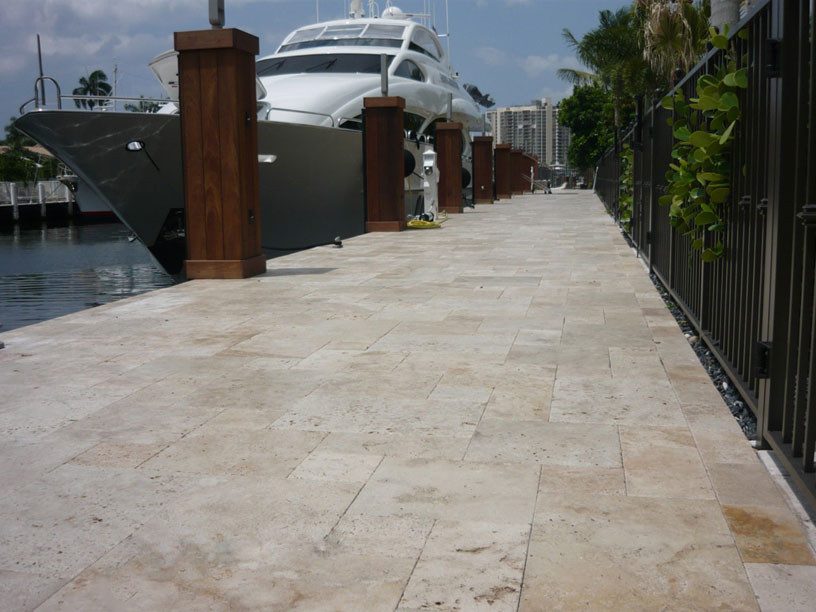Outdoor Paving Gallery
A step tread is the flat horizontal section of a step where you walk and place your feet, often confused with the step riser which is the vertical section of the step that covers the face of the stairway.
The depth of the tread is measured from the back of the step to the outer edge of the step, when meauring this, you need to ensure you allow enough depth to cover the riser that will be underneath, and any overhang you may be after (commonly 10-30mm). The “width” is measured from the far left side to the far right, also allowing for any risers if facing the sides.
Step treads are often designed to have a feature “nosing”, “capping” or “overhang” which is the section of the tread that overhangs the riser. Popular options here are a bullnose, square tumbeld edge or a rebated that creates an illusion of a large slab of stone.
View Our RangeHow far you can overhang a step riser greatly depends on what tread you are using, the thickness of the product and what the structural stability of the stairway is.
If you were using a tumbled or bullnosed tread, these are most common in a 30mm thickness and are recommended to be overhung between 10-30mm.
If using a rebated/dropface riser, these do not need to be overhung to create the look of depth as the rebated edge is already usually 30mm so it will protude out from the riser as per the second image in the gallery below.
Sealing can be a controversial topic when it comes to natural stone, especially Travertine.
Our professional opinion is that sealing is always advantageous and recommended, but not necessarily compulsory.
For example, if you are laying travertine paving in an entertaining area where you know that you will be installing a BBQ or pizza over, and then tables and chair where you will share a glass of wine with your friends, there is a high likelihood that at some point in time, somebody is going to drop a glass of wine, spill BBQ grease or drop a hotdog covered in tomato sauce. This is where a few coats of sealer would be been beneficial. Sealer is basically protection for when things go bad, to make the outcome not so bad.
Sealer allows you time to clean spillages before it soaks into all of the natural pores and features. This is because the sealer has already filled in the majority of the porous indentations and made itself at home. In saying this, sealer isn’t the holy grail. The longer something is left, the more it is going to be absorbed and higher the likelihood that it wont clean completely off. So basically, seal the stone and if you spill something, clean it – sooner rather than later.
We recommend 2-3 coats of high quality sealer (that is suitable to natural stone) between every 1-5 years – dependent on area usage. In additional to the reapplication of sealer, a high pressure hose every fortnight or so doesn’t go astray and will help make your stone outlive you and probably your great-great-great grandchildren too (Fun fact: The Colosseum and Trevi Fountain are made out of Travertine, and they’re over 2000 years old).
If you have an area with mulching leaves, a dog prone to having “mistakes” or teenage children who eat like they’ll never be fed again, you may benefit from making this a more regular routine and investing in an outdoor brush that can be used to agitate any persistent spillages.
Yes, you can. The vast majority of tilers and landscapers will be comfortable and familiar with curving tiles to fit pathways and external areas.
The edging used often depends on the style and budget of your project, aswell as the skill of the laborer. You can use the same 12mm or 30mm product you used to pave the rest of the area and run it to the edge, or you can get a capping option such as a bullnose if its a raised path or a walkway where you will notice the edges.
GET IN TOUCH
If you have any questions or querries, we would love to hear from you.
We have a variety of contact options, including email, contact forms, phone calls, call back requests and sample requests.
All of these can be found here on our contact page.


